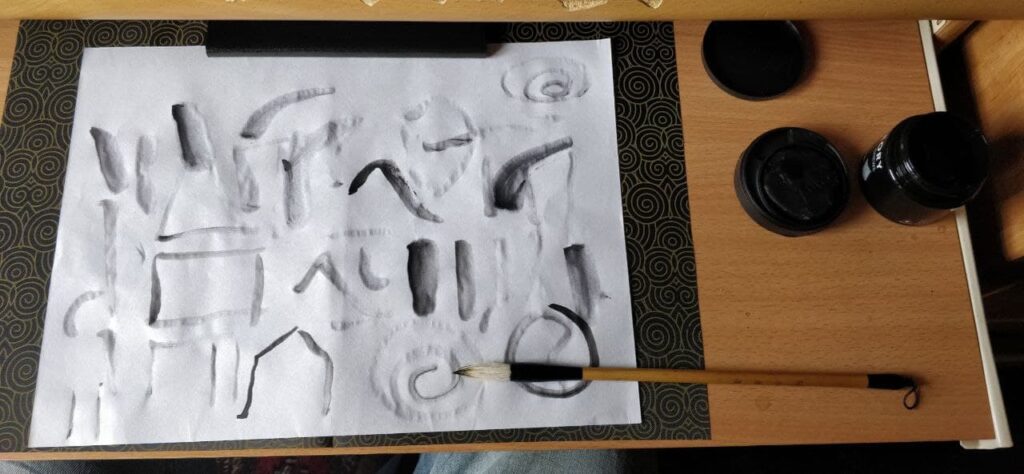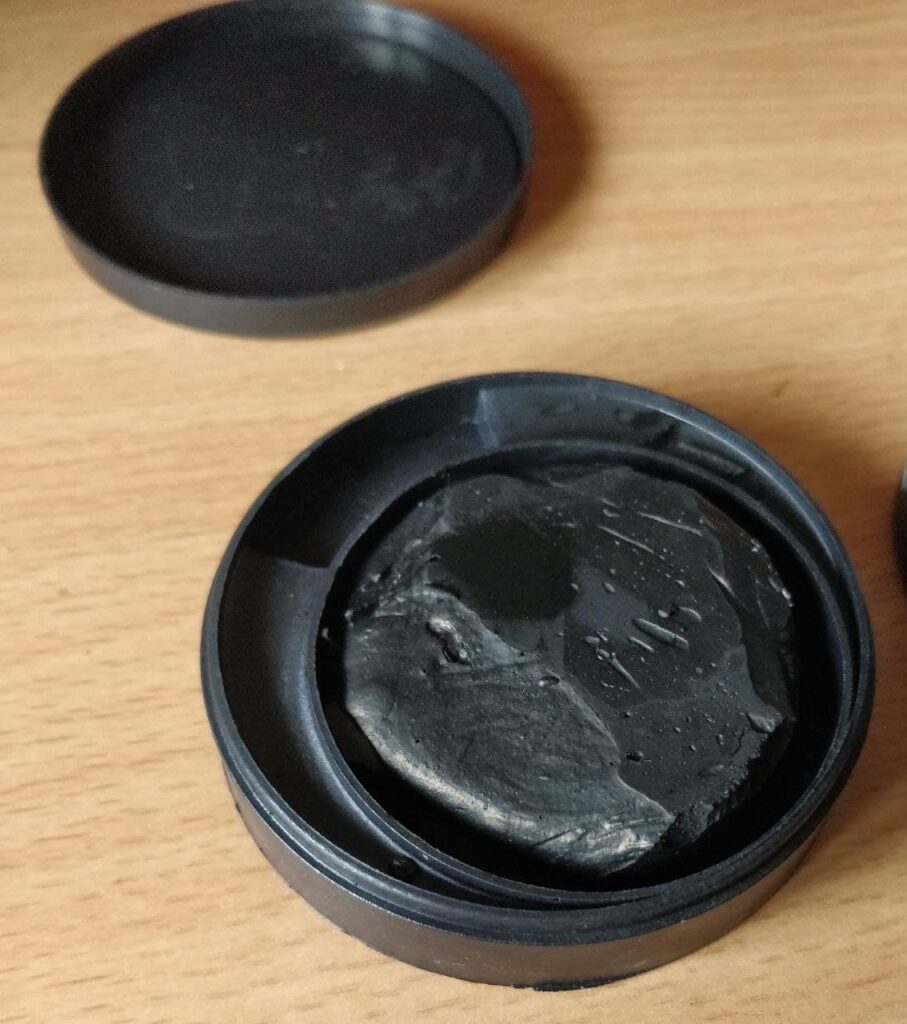Well, I finally bit the bullet and tried working with ink. On actual paper no less. There are a number of forms of ink delivery used in Chinese brush painting these days, and I’ve opted as a beginner for an ink cake. It’s a solid block of ink that can be activated with a wet brush. Simple and not too messy. I just practiced a few brushstrokes, and I can see I still have much to learn about how to use this medium, and that’s just working with black ink. I haven’t even begun to think about colors yet. Whew. Even just writing these few lines is anxiety-provoking. I’m quite activated in a positive way as well, but learning a visual art is surely pushing a lot of my buttons. I feel awkward and self-conscious. And yet I also feel as if I’m at the precipice of a universe of possibility. There’s exhilaration here, not just terror. This is definitely not my “comfort zone.” I’m reminded of a cartoon in which an extroverted person tells an introverted person, “You need to get out of your comfort zone.” To which the introvert replies “I’m never in my comfort zone. I’m literally always uncomfortable.” Remembering this always makes me laugh, because it hits home but in a playful way. As a musician, I’m enjoying the feeling of looking at a static product I’ve produced. Listening to a recording is not at all the same. And yet the process of making a painting (or at this point, practicing brush strokes) feels quite embodied to me. If I let myself go, I can start to feel in the flow as I paint. In fact, I really really want to play around and improvise in this medium. That thought excites me more than learning to paint orchids or bamboo. Although there is an appeal to that too. Medieval Chinese landscape paintings are what drew me to this form in the first place. But I’m also intrigued at the way some modern artists seem to play with it. At the most basic level, though, just the incredible variation of texture and shading that is possible with just black ink, intrigues and astounds me. My eye is especially drawn to thick brush strokes that form a “gradient” of light to dark from one side of the stroke to the other. And now I’ve made a couple of these! I can really see and feel the water in these brush strokes.


Comments
4 responses to “The brush hits the paper”
DAVID, FIRST THE BLOG WILL ONLY ALLOW ME TO USE CAPS, SO PLEASE KNOW I AM NOT shouting. Painting with the “chinese stye“ is interesting. I caution you on only watching you tube videos, AS IT WILL LIMIT YOU TO COPYING CHARACTERS ETC. ARE YOU PLANNING ON JUST LEARNING THE STROKE AND APPLYING THEM TO YOUR OWN COMPOSITIONS OR ARE YOU THINKING OF REPLICATION?
I’m interested in replication as a tool for learning, but i also want to play around with the form and improvise as I become more adept with it.
hi David,
yes, strange – caps only, even when GOING OUT AND COMING BACK IN TO THIS POST – SORRY! I think in your presentation you mentioned the ink cake as different than watercolors. Can you say how – if you know? This looks like a lot of fun to play with – I’m so glad you’re enjoying the journey.
Hi Jill,
Hmmm…I’ll have to look into the capital letter issue it’s happening for me, as well, when I type, but once posted, the comment looks normal, although it was not an issue with this blog in the past).
So, the ink cake is a newer way to use ink that is easier for beginners, or if you’re going to paint outside, for example. As Tiffany mentioned on my VoiceThread, the more traditional method is to grind an ink stick into a stone container and mix the powder with water. Bottled ink is also now frequently used.
So black ink is often central to this type of painting, and there are plenty of paintings that only use it. But whether you’re using ink alone or with colors, you do generally mix the ink or paint with some amount of water. However, the result usually is not as diffuse and “ethereal” as western watercolors. The composition of the paint is different as well, although off the top of my head I’m not sure of the specifics.